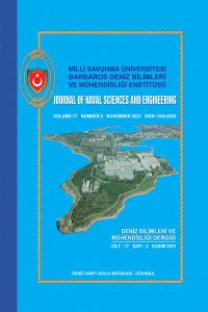GENDER CLASSIFICATION FROM FACE IMAGES
In
this article, we study on gender classification which is one of the important
issue in security, statistics and related commercial areas. In the study, FEI
face data set has been used that has 200 female and 200 male frontal face
images. Principal component analysis (PCA) has been used for feature extraction
process. We use all part of the face images instead of taking some part of
them. Support Vector Machine (SVM) and k-nearest neighbor algorithms used for
classification test phases. We compare the results which obtained in our
experiments and give them in tables and graphs. According to the experiments,
defined as hybrid method principal component analysis with k-nearest neighbor
method gives better recognition accuracy then defined as hybrid method
principal component analysis with support vector machine method.
___
- [1] Hotelling, H.: Analysis of a complex of statistical variables into principal components, Journal of Educational Psychology, vol.. 24, (1933), 417–441 and 498–520.
- [2] Alpaydın E.: Introduction to machine learning, The MIT Press, USA, (2015).
- [3] Pearson, K.: On lines and planes of closest fit to systems of points in space, Philosophical Magazine, vol. 2, no.11, (1901), 559–572.
- [4] Jain, A. ve Huang, J.: Integrating independent components and linear discriminant analysis for gender classification, International Conference on Automatic Face and Gesture Recognition, Seoul, Korea, (2004), 159-163.
- [5] U. Turhal, A. Akbaş: Yüz örüntülerinden cinsiyet tespitinde hibrit özniteliklerle performans geliştirme, Elektrik-Elektronik ve Bilgisayar Sempozyumu, (2016), 361-365.
- [6] Z. Sun, G. Bebis: X. Yuan, S. J. Louis, Genetic Feature Subset Selection for Gender Classification: A comparison study, IEEE Workshop on Applications of Computer Visions, (2002), 165-170. [7] L. Lu, P. Shi: A novel fusion-based method for expression-invariant gender classification, IEEE International Conference on Acoustic, Speech and Signal Processing, (2009) 1065-1068.
- [8] H. Hasassnpour, H. Dehghan: Neonate facial gender classification using PCA and fuzzy clustering, Iranian Conference of Biomedical Eng., (2010), 1-5.
- [9] M. Hu, Y. Zheng, F. Ren, H. Jiang: Age estimation and gender classification of facial images based on local directional pattern, IEEE International Conference on Cloud Computing and Intelligent Systems, (2014), 103-107.
- [10] A. Verma, L. Vig: Using Convolutional Neural Networks to discover cognitively validated features for Gender Classification, International Conference on Soft Computing and Machine Intelligence, (2014), 33-37.
- [11] T. Bissoon, S. Viriri: Gender classification using Face Recognition, International Conference on Adaptive Science and Technology, (2013), 1-4.
- [12] S. A. Khan, M. Nazir, N. Naveed, N. Riaz: Efficient gender classification methodology using DWT and PCA, IEEE International Conference on Multitopic Conference, (2011), 155-158.
- [13] R. Brunelli, T. Poggio: Hyber BF networks for gender classification, DARPA Image Understanding Workshop, (1992).
- [14] Pearson, K.: On lines and planes of closest fit to systems of points in space, Philosophical Magazine 2 (6), (1901), 559-572.
- [15] Fix, E., Hodges, J. L.: Discriminatory analysis nonparametric discrimination: Consistency properties, Technical Report 4, (1951).
- [16] Wiesner V., Evers L.: Statistical data mining, University of Oxford, (2004).
- [17] Ozbudak O., "Gender classification from pictures of human faces", MSc thesis, Electronics and Communication Eng., Istanbul Technical University, (2009).
- ISSN: 1304-2025
- Yayın Aralığı: 2
- Başlangıç: 2003
- Yayıncı: Milli Savunma Üniversitesi Deniz Harp Okulu Dekanlığı
